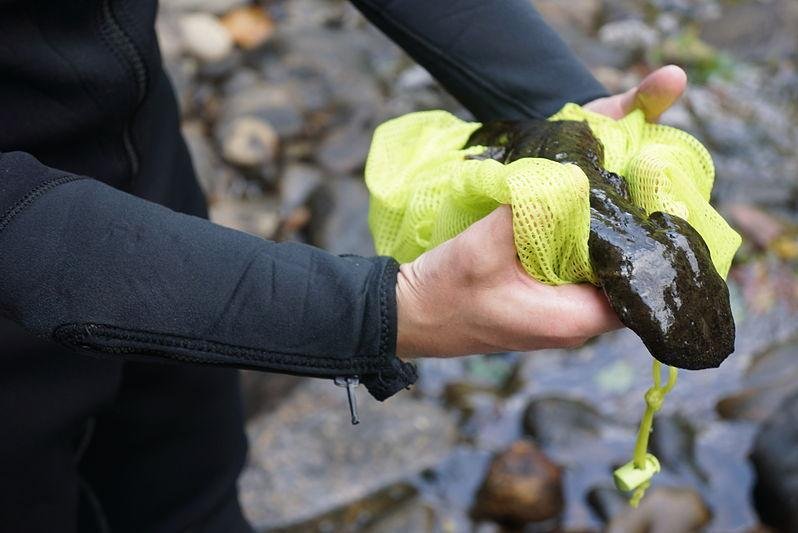A federal wildlife official handles a hellbender salamander. (Gary Peeples/USFWS)
WEST LAFAYETTE, Ind., July 10 (UPI) -- Hellbender salamander -- North America's largest salamander -- populations are on the decline in all 16 U.S. states where the slimy aquatic creature is found. The amphibian's quick and continuing disappearance is worrying scientists, which say it's indication of deteriorating water quality.
"Their populations are declining in many of their geographic locations," said Rod Williams, a herpetologist at Purdue University. Williams has been tracking the hellbender's steady decline in Indiana for almost a decade.
"This species has hardly changed in 160 million years of existence, so we think it's worth the effort to do our part to save this living fossil," Williams said, speaking of his and Purdue's commitment to the creature's protection.
The giant salamander, sometimes called "devil dog" and "old lasagna sides," can grow up two feet in length and weigh up to five pounds. It's habitat extends into 16 different states, including Alabama, Arkansas, Georgia, Illinois, Indiana, Kentucky, Maryland, Mississippi, Missouri, New York, North Carolina, Ohio, Pennsylvania, Tennessee, Virginia and West Virginia.
Not only is it the largest in America, the hellbender salamander is the third largest in the world, just behind the Chinese giant salamander and the Japanese giant salamander.
Subsisting on crayfish, minnows, worms and snails, the hellbenders are mostly nocturnal and spend the entirety of their lives -- as long as 30 years -- in rivers and streams. Because they breathe through their skin, sucking oxygen from the water, they are a repository for the silt and pollution that too often invades America's fresh water bodies.
Hellbenders are divided into two subspecies, the eastern and ozark hellbenders. The ozark hellbender, which is only found in Arkansas and Missouri, has been federally protected as a member of the endangered species list since 2001. The U.S. Fish and Wildlife Service is currently studying the eastern salamander to determine where it also deserves stronger protection.















